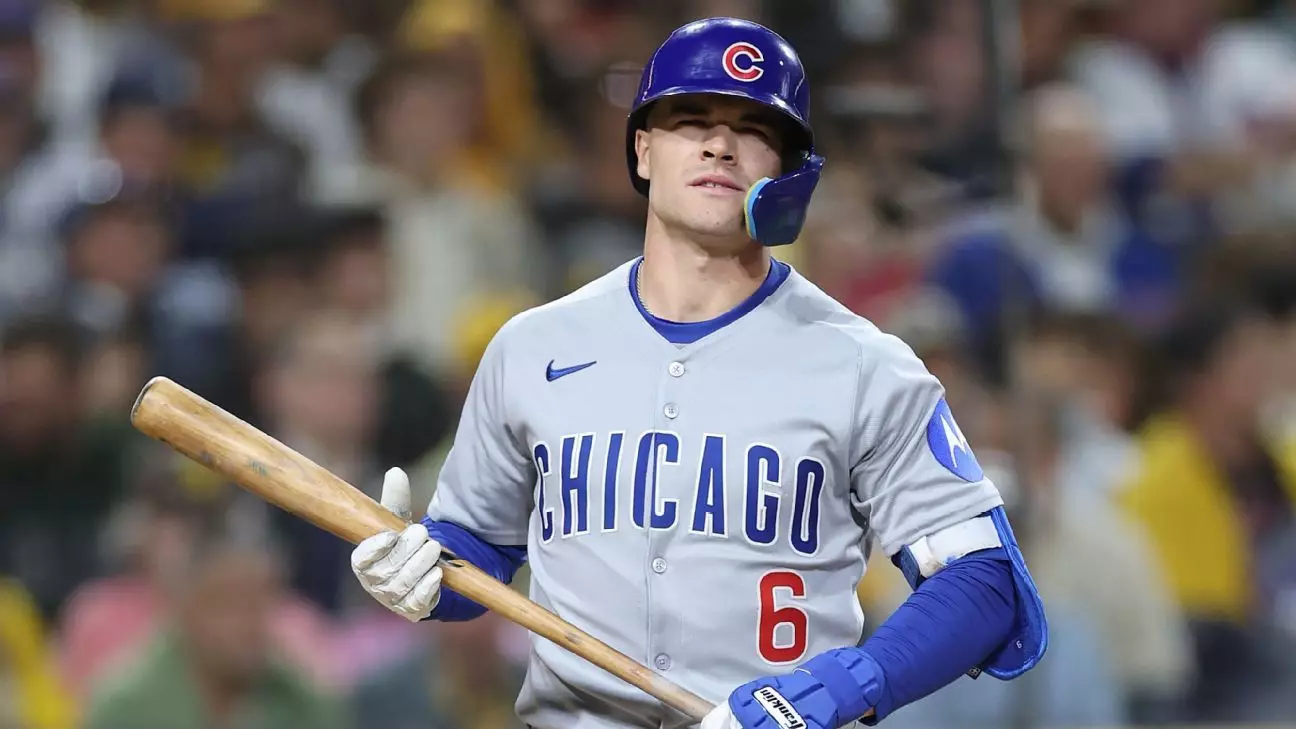The Chicago Cubs recently made the tough decision to option their highly-touted prospect, Matt Shaw, to Triple-A Iowa after a rocky beginning to his major league career. Selected as the No. 13 overall pick in the 2023 amateur draft, Shaw’s lofty expectations have collided with reality, where he’s been mired in a challenging slump, recording only ten hits in 58 at-bats, accompanied by a solitary home run and a mere three RBIs. Such statistics, compounded by a staggering 18 strikeouts in just 68 plate appearances, highlight the difficulties young players often face when transitioning to the major league level.
The frustration isn’t solely Shaw’s; it mirrors a broader phenomenon observed in rookie players. Manager Craig Counsell’s assertion that “sometimes you have to take a step back” emphasizes a crucial element of player development. While the Cubs are still leading the NL Central, the time to refine talents like Shaw is pivotal—not just for the player’s growth but also for team dynamics.
Understanding the Impact of Mental Reframing
One crucial factor in Shaw’s developmental journey is the mental aspect of the game. In the eyes of Counsell, young hitters often require a mental reset; the overwhelming pressure to perform can distort their natural abilities. It’s essential for the Cubs to cultivate an environment where Shaw can regain his confidence and sense of self as a hitter. This reset isn’t merely about honing skills; it’s a recalibration of one’s mental approach to the game. Success at the plate can often come from a wave of good feelings and momentum. It’s no secret that even seasoned veterans can struggle, yet the guidance available to young players can significantly mitigate these challenges.
By sending Shaw to Triple-A, the Cubs are not just hoping for improved statistics but are aiming to preserve his long-term potential as a formidable offensive threat. Each at-bat in Iowa will be an opportunity for him to build consistency and reclaim his rhythm.
Injury Setbacks and Roster Movements
Unfortunately, the challenges facing the Cubs extend beyond Shaw. The news that right-hander Eli Morgan has been placed on the 15-day injured list due to an elbow impingement adds another layer of concern. Morgan’s struggles this season have failed to reflect his promising history with the Guardians, where he excelled in a strong bullpen. His recent performance—a 12.27 ERA in just seven appearances—exemplifies the unpredictable nature of player injuries and how they can derail expectations.
The series of roster changes, including the return of infielder Vidal Brujan and the promotion of pitchers Luke Little and Daniel Palencia, further indicates that the Cubs are actively seeking a balance between nurturing talent and addressing immediate needs. With the recent loss of ace Justin Steele to a season-ending injury, it’s critical that the Cubs not only manage their current roster effectively but also invest in the long-term success of their burgeoning talents.
The Road Ahead for the Cubs
In the face of these challenges, the Cubs must navigate both player development and performance pressures. Shaw’s journey illustrates the rollercoaster of emotions and expectations that accompany young athletes. While the path may be fraught with obstacles, the opportunity for growth and long-term success remains high—if managed correctly. Adapting to the rhythm of the major leagues is no small feat, but with the right supports in place, Shaw has the chance to emerge stronger, proving that even the toughest beginnings can lead to eventual triumph.

